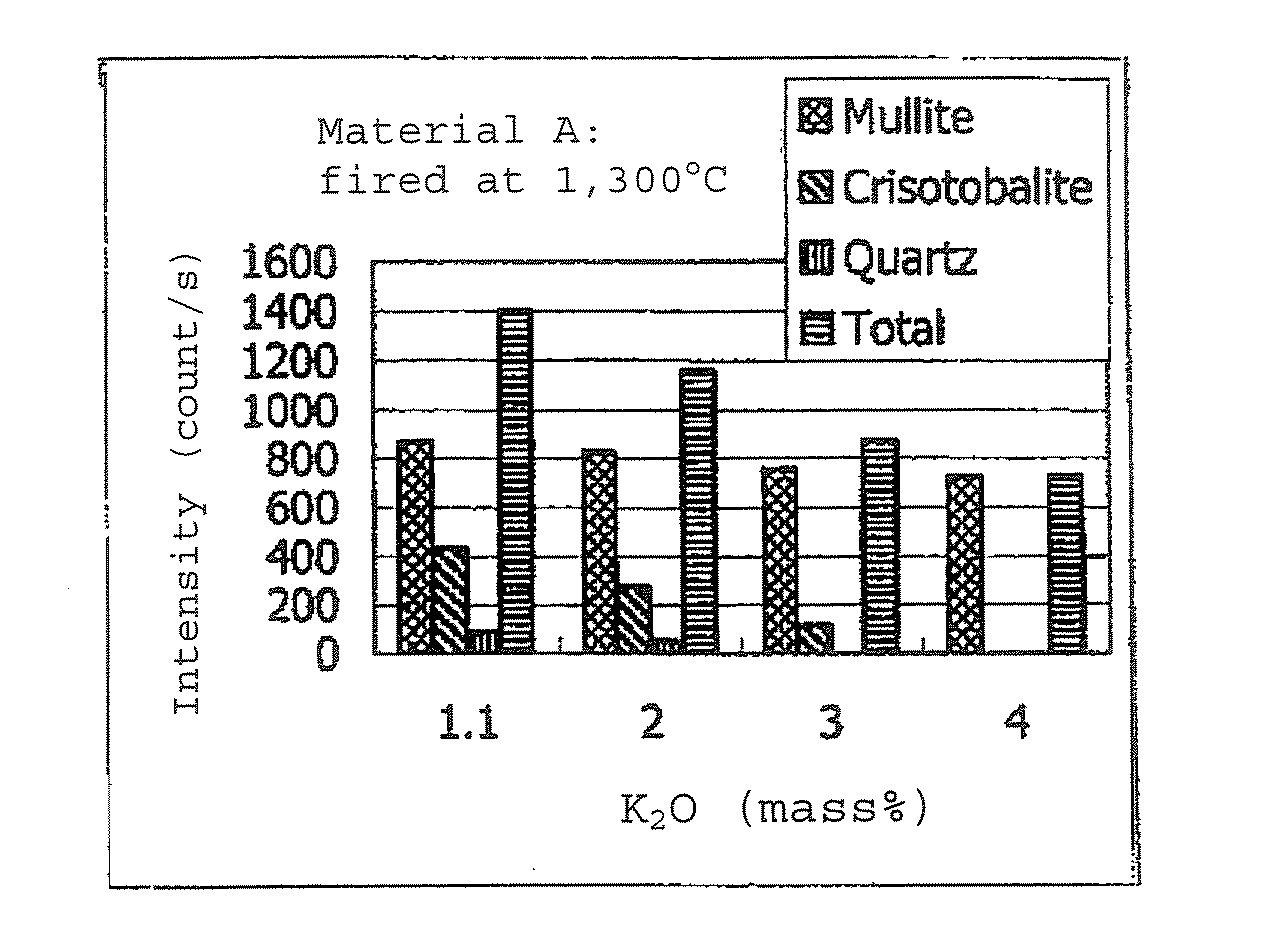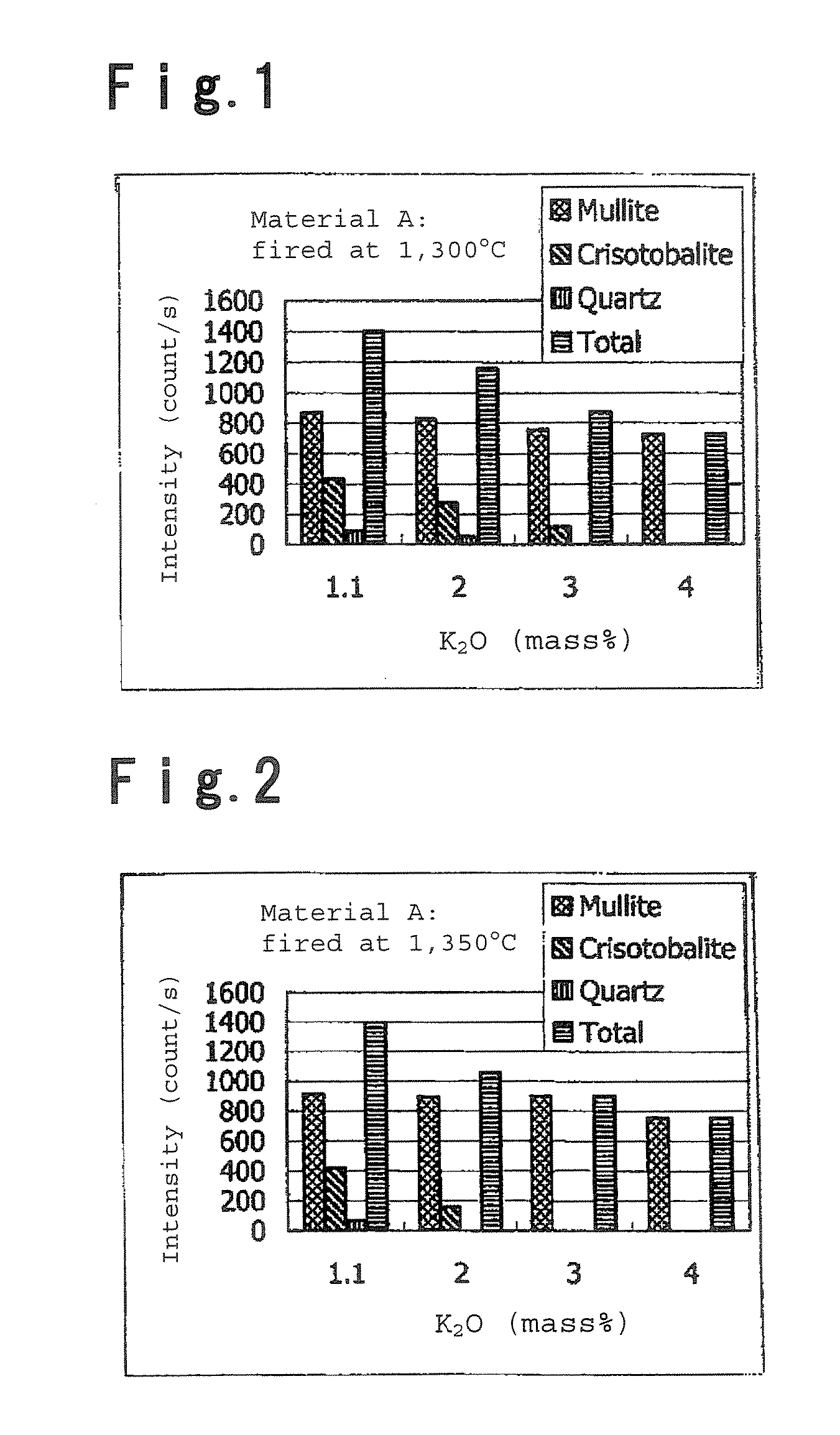Float bath bottom refractory brick and process for its production
a refractory brick and bottom technology, applied in the field of refractory bricks, can solve the problems of inhibiting smooth production of plate glass, and achieve the effects of prolonging the life of the float bath, suppressing flaking phenomena, and suppressing nepheline formation
- Summary
- Abstract
- Description
- Claims
- Application Information
AI Technical Summary
Benefits of technology
Problems solved by technology
Method used
Image
Examples
example 1
[0051]To 10 g of the clayey material A, potassium carbonate as a K2O source was added in an amount of not added (1.1%), 2, 3 or 4% as calculated as K2O mass % after mixing. The material having no potassium carbonate added corresponds to sample 1 (Comparative Example 1), and mixtures having potassium carbonate added in an amount of 2%, 3% and 4% correspond to sample 2 (Example 1), sample 3 (Example 1) and sample 4 (Example 1), respectively. As potassium carbonate, one preliminarily pulverized in a mortar was employed. Kneading was carried out in a mortar. The kneaded product was put in a mold, and molded into pellets by means of a pressing machine. The molded product was fired at 1,300° C. for 24 hours.
[0052]The fired product was crushed into granules, and the obtained granular refractory material was kneaded, molded into two molded products with a shape of a desired float bath bottom refractory brick, and the two molded products were dried and fired at 1,300° C. and 1,350° C., respe...
example 2
[0057]In the same manner as in Example 1, to 10 g of the clayey material B, potassium carbonate as a K2O source was added in an amount of 0.3 (not added), 2, 3, 4 or 6% as calculated as K2O mass % after mixing. The material having no potassium carbonate added corresponds to sample 5 (Comparative Example 2), and mixtures having potassium carbonate added in an amount of 2%, 3%, 4% and 6% correspond to sample 6 (Example 2), sample 7 (Example 2), sample 8 (Example 2) and sample 9 (Comparative Example 3), respectively. As potassium carbonate, one preliminarily pulverized in a mortar was employed. Kneading was carried out in a mortar. The kneaded product was put in a mold and molded into pellets by means of a pressing machine. The molded product was fired at 1,300° C. for 24 hours.
[0058]The fired product was crushed into granules, and the obtained granular refractory material was kneaded and molded into two molded products with a shape of a desired float bath bottom refractory brick, and ...
PUM
| Property | Measurement | Unit |
|---|---|---|
| grain size | aaaaa | aaaaa |
| grain size | aaaaa | aaaaa |
| grain size | aaaaa | aaaaa |
Abstract
Description
Claims
Application Information
 Login to View More
Login to View More - R&D
- Intellectual Property
- Life Sciences
- Materials
- Tech Scout
- Unparalleled Data Quality
- Higher Quality Content
- 60% Fewer Hallucinations
Browse by: Latest US Patents, China's latest patents, Technical Efficacy Thesaurus, Application Domain, Technology Topic, Popular Technical Reports.
© 2025 PatSnap. All rights reserved.Legal|Privacy policy|Modern Slavery Act Transparency Statement|Sitemap|About US| Contact US: help@patsnap.com



